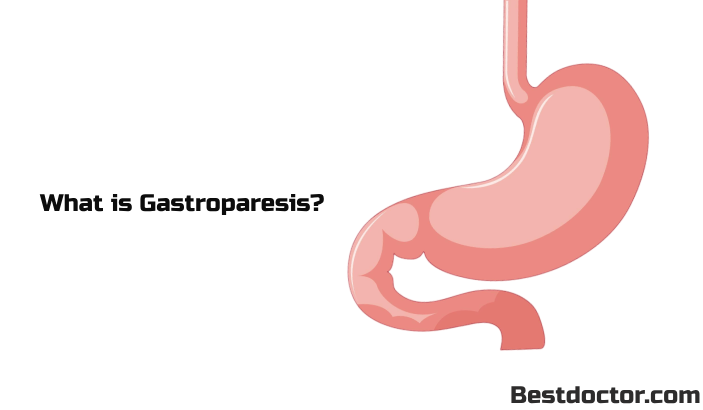What Is A Frozen Shoulder?
Frozen shoulder, also referred to as adhesive capsulitis, is a painful condition caused by stiffness and inflammation of the shoulder, wherein the shoulder becomes hard to move.
There are several do’s and don’ts for a frozen shoulder that will help you best manage the condition.
Frozen shoulder occurs when the shoulder joint capsule that is the strong connective tissue surrounding the shoulder joint becomes thick, stiff, and inflamed.
The condition is described as a “frozen” shoulder because the more you feel the pain, the lesser you will use your shoulder. The reduced use or movement causes thickening and tightening of the shoulder capsule. When the inflammation progresses, scar tissue formation occurs that may cause thick bands of tissue (adhesions) between tendons, bones, and ligaments. This reduces the space for rotation, making the shoulder even harder to move. Hence, it is “frozen” in its position.
A frozen shoulder commonly occurs in adults and mostly in women between the age of 40 and 60 years.
The risk is more in people who have had a recent shoulder injury, conditions such as diabetes, stroke, hypothyroidism, hyperthyroidism, and Parkinson’s disease.
Symptoms Of Frozen Shoulder
Symptoms of frozen shoulder develop in three stages. The stages of frozen shoulder are;
- Hormonal imbalance and a weakened immune system can make you vulnerable to joint inflammation.
- Diabetes– Frozen shoulder is more often seen in people with diabetes, but the reason is still not known. Diabetic patients show a greater degree of stiffness in the shoulder joint that persists for a longer duration before “thawing.”
- Other medical conditions that are linked to a frozen shoulder are stroke, hypothyroidism, hyperthyroidism, and Parkinson’s disease. Stroke poses the risk for a frozen shoulder because of the limitation in the range of motion of an arm and shoulder. The reasons for the other conditions associated with frozen shoulder are still not clear.
- Immobilization– Shoulder immobility for a long period after surgery, a fracture, or other injuries that require being in a sling or cast can cause a frozen shoulder. The other causes of immobilization include a few conditions such as arthritis, bursitis, or a rotator cuff tear.
- Other possible causes include inflammation of the lining of the shoulder joint or autoimmune reactions.
- Do regular exercise and follow the physical therapy exercise program promptly
- Do use ice packs to help relieve pain. Apply an ice pack for 10 minutes 3-4 times a day.
- Do take pain relief medications as recommended by your doctor
- Do find out and gain knowledge about this condition and be informed about the various treatment options
- Do consult a shoulder specialist if conservative treatment methods do not return the shoulder to its normal condition.
- Don’t stop moving your shoulder completely because of pain
- Don’t do activities that involve sudden jerky movements like walking the dog and heavy lifting with the affected side
- Don’t sleep on the affected shoulder
- Don’t skip your regular exercise and physical therapy sessions
- Don’t neglect your diet. A frozen shoulder is found to be linked to an overall state of health.
- Nonsteroidal anti-inflammatory drugs (NSAIDs) – These include aspirin and ibuprofen.
- Steroid Injections – An anti-inflammatory steroid injection called cortisone is injected directly into the shoulder joint in case of severe pain and swelling.
- Doing shoulder exercises regularly that include stretching and range of motion exercises
- Managing and controlling diabetes and thyroid issues
- Treating sports-related injuries promptly
- Moving your shoulder after surgery or an injury
- Considering regular health check-ups
- Adopting healthy eating habits and following a nutritious diet
- Including vitamin D in your diet
The Freezing Stage
This stage is characterized by stiffness and pain in the shoulder. There is a gradual increase in pain, decreasing the range of motion. The pain is felt more at night and shoulder movement becomes increasingly difficult. This stage typically lasts 6 weeks to 9 months.
The Frozen Stage
In this stage, pain may become less, but the stiffness of the shoulder remains the same. The frozen stage lasts 2 to 6 months, and the simple daily tasks and activities become difficult.
The Thawing (recovery) Stage
In this stage, the pain felt is reduced, and movement of the joint slowly improves. Complete recovery occurs at this stage as the shoulder gets back to its normal strength and motion. This stage takes about 6 months to 2 years.
Pain caused by a frozen shoulder is usually dull or aching. It is typically severe in the early course of the disease and on moving your arm. The pain is usually felt on the area over the outer shoulder and sometimes the upper arm.
Causes Of Frozen Shoulder
Scientists have not completely understood the causes of a frozen shoulder. A few factors that increase the risk for developing a frozen shoulder include:
Do’s and don’ts for frozen shoulder
Here are a few do’s and don’ts for people suffering from a frozen shoulder;
Do’s
Don’ts
Treatment For Frozen Shoulder
The frozen shoulder gets better over time but may take up to 3 years for complete recovery. Treatment aims at reducing pain until the initial phase has passed. If you continue to have pain and stiffness, therapy and surgery may be required to restore mobility if it does not improve on its own.
Few simple treatment modalities include;
Hot And Cold Compresses
Help to reduce pain and swelling
Massage
Frozen shoulder massage techniques help to relieve pain by increasing blood circulation.
Medications To Reduce Pain And Swelling
Hydrodilatation
If nonsurgical methods do not improve your symptoms, hydrodilatation may be recommended. This method involves placing a fine needle in the shoulder joint with the guidance of an X-ray or ultrasound. The shoulder joint is injected with sterile saline along with a local anesthetic and steroid. This procedure expands and stretches the shoulder joint capsule to improve the movement of the shoulder and reduces shoulder pain.
Physical Therapy
This involves stretching and range of motion exercises to restore mobility under the supervision of a physiotherapist. Moist heat is applied to the shoulder prior to stretching to loosen and soothe the joint and surrounding muscles.
Examples: External rotation, forward flexion, and crossover arm stretch.
Home Exercise Program
Following an exercise regimen regularly at home.
Transcutaneous Electrical Nerve Stimulation (TENS)
This procedure involves a small battery-operated device that uses low-voltage electric currents to treat pain by blocking nerve impulses.
If the simple treatment methods have not helped to relieve shoulder pain and stiffness after trying for a year, other procedures such as surgery may be recommended. These include;
Manipulation Under Anesthesia
During this procedure, your doctor will forcefully move the shoulder. The movement causes stretching or tearing the joint capsule to loosen the tightness. This will increase the ability to move your shoulder.
Arthroscopic Capsular Release
This procedure involves the insertion of a tiny camera through a small incision into the shoulder joint. With the guidance of images displayed on a screen, through other small incisions around your shoulder, the doctor will insert small pencil-sized instruments to cut through the thick and tight parts of your shoulder joint capsule (capsular release). This loosens the tissue that allows free mobility.
Manipulation under anesthesia and arthroscopic capsular release are often performed together for better results.
How To Prevent A Frozen Shoulder?
A frozen shoulder can be prevented by;
Consider all the do’s and don’ts for frozen shoulder, most cases resolve without surgery.
Vasavi Attada specializes in creating content for Medical/healthcare domain. She has written articles for Indian Health Organization (IHO), American Diabetes Association, and for magazines such as India Today and Dignity Dialogue.
Vasavi Attada holds a Master’s degree in Microbiology from Bangalore University.








Enhancing Your Career Opportunities with Improved Vision from LASIK Surgery in Manhattan
What Does Cloudy Urine Mean in Females and Males?
Palmar Hyperhidrosis: Understanding Causes, Symptoms, and Treatment
16 Warning Signs You Need to Go See Your Doctor As Early As Possible